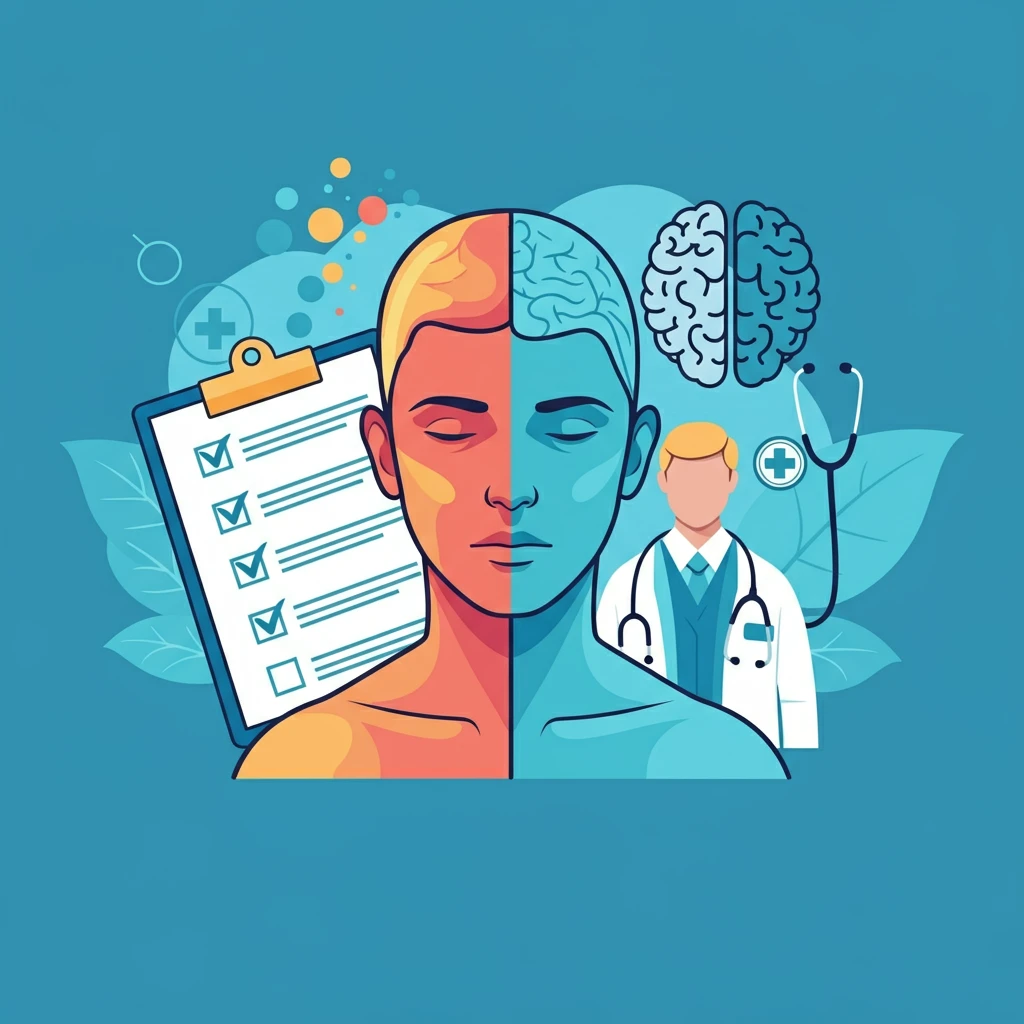Introduction
Bipolar disorder is a complex mental health condition that affects millions of individuals worldwide. It is characterized by extreme mood swings, ranging from emotional highs (mania or hypomania) to debilitating lows (depression). Understanding bipolar disorder is crucial in supporting those affected and ensuring they have access to proper care and treatment.
Accurate diagnosis plays a pivotal role in managing bipolar disorder effectively. Without a reliable mental health diagnosis, individuals may struggle to understand their condition or receive the appropriate interventions they need to thrive. Diagnosis often involves a careful evaluation of symptoms, medical history, and, in some cases, specific medical tests for bipolar disorder.
The impact of bipolar disorder reaches beyond the individual, affecting families, careers, and overall quality of life. That’s why seeking support from a trusted rehabilitation center for bipolar disorder or finding the best bipolar rehab centre near you can offer a beacon of hope. These institutions provide essential resources and personalized plans to help individuals regain stability and lead fulfilling lives.
Understanding Bipolar Disorder Symptoms
Bipolar disorder is characterized by dramatic shifts in mood, energy levels, and behavior, which are categorized into manic episodes and depressive episodes. These mood episodes can significantly impact daily life, making it challenging to maintain consistency in work, relationships, and personal well-being.
Signs of Manic Episodes
Manic episodes are marked by periods of heightened energy, activity, and often an inflated sense of self-confidence. Individuals may experience racing thoughts, decreased need for sleep, or engage in risky behaviors, such as impulsive spending or reckless decision-making. While these episodes can sometimes feel euphoric or highly productive, they often lead to distress and negative consequences.
Depressive Episodes in Bipolar Disorder
On the other hand, depressive episodes are periods of profound sadness, fatigue, and feelings of worthlessness or hopelessness. Those experiencing a depressive episode may struggle with concentrating, lose interest in activities they once enjoyed, or encounter significant disruptions in their sleep and appetite patterns. The weight of these episodes can feel overwhelming, often making even small daily tasks seem insurmountable.
Impact on Daily Life
The cyclical nature of mood swings in bipolar disorder—oscillating between manic and depressive episodes—can significantly disrupt an individual’s life. These unpredictable changes may hinder personal relationships, create financial hardships, or impact professional responsibilities. Recognizing and addressing these symptoms with the help of mental health professionals is vital to achieving stability and improving quality of life.
The Bipolar Disorder Diagnosis Process According to DSM-5 Criteria
Receiving a proper diagnosis for bipolar disorder is a crucial step toward understanding and managing the condition effectively. The DSM-5, or Diagnostic and Statistical Manual of Mental Disorders, provides comprehensive criteria for diagnosing bipolar disorder, which helps mental health professionals accurately identify the condition and distinguish it from other mental health challenges.
The diagnosis process typically begins with a thorough evaluation by a psychiatrist or qualified mental health professional. They assess a patient’s history of mood episodes, duration, severity, and their impact on daily life. Bipolar disorder is categorized into two primary types: Bipolar I and Bipolar II. Bipolar I is characterized by at least one manic episode, with or without depressive episodes, while Bipolar II involves a pattern of hypomanic episodes alongside major depressive episodes. Understanding the distinction between the two is essential for crafting tailored treatment plans.
For a diagnosis, the DSM-5 outlines specific symptoms and criteria that must be met. These include periods of elevated or irritable mood, changes in energy levels, decreased need for sleep, and episodes of depression marked by feelings of hopelessness or worthlessness. Accurate diagnosis also considers the duration and recurrence of these episodes, as well as the exclusion of symptoms caused by other medical conditions or substances.
The importance of correct diagnosis cannot be overstated. Misdiagnosis may lead to ineffective treatments or even worsening symptoms. Timely diagnosis ensures access to appropriate interventions, such as inpatient treatment for severe cases, residential rehab programs for comprehensive care, or long-term bipolar disorder treatments that combine medication, therapy, and lifestyle changes. By working closely with a trusted mental health professional, individuals living with bipolar disorder can gain hope and take important steps toward stability and a brighter future.
Key Diagnostic Criteria for Bipolar Disorder You Should Know
Understanding how bipolar disorder is diagnosed can provide clarity and hope for those navigating its challenges. One of the primary indicators of this condition is the presence of a manic or hypomanic episode. These episodes are characterized by elevated mood, increased energy levels, a decreased need for sleep, and impulsivity. However, individuals with bipolar disorder also experience depressive episodes, marked by deep sadness, fatigue, poor concentration, and feelings of hopelessness.
Mood swings that significantly impact daily functioning are another critical aspect of diagnosis. It’s important to differentiate bipolar disorder from similar conditions, such as depression, as bipolar disorder involves shifts between extremes of mood, while depression is typically a prolonged low mood state. Additionally, more severe cases of bipolar disorder may include psychotic features, such as hallucinations or delusions, particularly during extreme mood episodes.
Genetic predisposition also plays a crucial role in bipolar disorder. A family history of the condition can provide supportive evidence for a diagnosis, as research shows a strong link between genetics and bipolar risk. Early signs, especially in young adults, may include erratic mood changes, disrupted relationships, or altered sleep patterns. By recognizing these early warning signs and working closely with a mental health professional, individuals and families can feel empowered to seek appropriate support and treatment.
Challenges in Diagnosing Bipolar Disorder
Diagnosing bipolar disorder can be a complex and nuanced process due to several challenges, including overlapping symptoms with other mental health conditions and the risk of misdiagnosis. Many of the symptoms associated with bipolar disorder, such as mood swings, depression, and irritability, also occur in other conditions like major depressive disorder, anxiety disorders, or even ADHD. This overlap can sometimes obscure the root cause, making it difficult to pinpoint a bipolar diagnosis. Furthermore, the episodic nature of bipolar disorder adds another layer of complexity, as individuals might only seek help during depressive episodes, potentially leading to an incorrect diagnosis that focuses solely on depression.
Misdiagnosis can delay proper treatment and contribute to unnecessary suffering, often exacerbating the condition. This is why a thorough evaluation considering a person’s medical history, family history, and symptom patterns over time is essential. With accurate diagnosis and early intervention, individuals living with bipolar disorder can find hope and access treatments that help them lead fulfilling lives.
Diagnostic Tools and Evaluation Methods Used by Mental Health Professionals to Diagnose Bipolar Disorder Effectively
Accurate diagnosis of bipolar disorder requires a careful and comprehensive approach, utilizing a combination of tools and evaluation methods to fully understand an individual’s mental health. Clinical interviews form the foundation of this process, allowing mental health professionals to discuss symptoms, behaviors, and emotional patterns with the individual. These interviews often explore both current experiences and past episodes of mood changes to identify key features of bipolar disorder.
Mood charting is another valuable tool, involving the tracking of daily emotions, sleep patterns, and energy levels. This method helps both the individual and the clinician recognize distinct cycles of depression and mania or hypomania that define bipolar disorder. Input from family can also prove to be crucial in this process, as loved ones may provide insights into behavioral changes or patterns that the individual may not notice or clearly recall.
Additionally, bipolar screening and evaluation often include psychological assessments and standardized questionnaires designed to identify symptoms consistent with bipolar disorder. For more complex cases, staying in a specialized mental health rehab facility for bipolar disorder may provide an intensive evaluation and a structured environment to gain deeper insights into the individual’s condition. Ultimately, a thorough mental health assessment that combines these tools offers a strong foundation for accurate diagnosis and individualized treatment planning, paving the way for recovery and stability.
Treatment Planning for Diagnosed Bipolar Patients
Establishing an effective treatment plan for bipolar disorder is a vital step toward achieving stability and improving quality of life. A key component of this plan is medication management, often including the use of mood stabilizers and antipsychotics to regulate mood fluctuations and manage symptoms. These medications are carefully prescribed based on an individual’s unique needs, and adherence to the prescribed regimen is crucial for long-term success.
Alongside medication, psychotherapy approaches like cognitive-behavioral therapy (CBT) or interpersonal and social rhythm therapy (IPSRT) empower patients to understand and address the emotional and psychological challenges they face. Therapy provides tools to identify triggers, develop coping strategies, and improve relationships.
Equally important are lifestyle changes and education/support groups. Encouraging healthy routines, such as regular sleep patterns, balanced diets, and consistent physical activity, can significantly impact mood stability. Education for both patients and their families fosters a deeper understanding of the condition, while support groups create a sense of community and shared growth through peer connection. By integrating these strategies, patients can build a robust foundation for managing bipolar disorder.
Conclusion
While the path to managing bipolar disorder effectively may seem challenging, it is both achievable and rewarding. Through the combination of effective diagnosis, tailored treatment plans, and ongoing support, individuals with bipolar disorder can lead balanced, fulfilling lives. By working collaboratively with healthcare providers, exploring therapy options, maintaining a healthy lifestyle, and accessing supportive resources, those with bipolar disorder can remain hopeful and resilient on their road to stability and wellness.









Leave a Reply